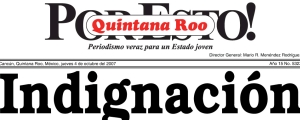 A five-year long struggle to penetrate the mysteries of two huge drug busts in Mexico on American-registered planes may soon receive answers, courtesy an unlikely source: a Congressional investigation into Operation Gunwalker, an ATF program with no discernible law enforcement purpose that allowed arms traffickers to smuggle 2000 weapons across the border to Mexican drug lords.
A five-year long struggle to penetrate the mysteries of two huge drug busts in Mexico on American-registered planes may soon receive answers, courtesy an unlikely source: a Congressional investigation into Operation Gunwalker, an ATF program with no discernible law enforcement purpose that allowed arms traffickers to smuggle 2000 weapons across the border to Mexican drug lords.
If the CIA is arming Mexican drug cartels, might they not also have been behind the otherwise-puzzling effort to supply these same drug lords with top-quality American-registered airplanes and jets?
Were the two now-infamous American-registered planes busted in Mexico's Yucatan carrying almost ten tons of cocaine part of this same so-far unnamed Operation behind the ATF's Operation Gunwalker?
The operation first came to light last December, when guns the ATF allowed to go to Mexican drug cartels were used to murder Border Patrol Agent Brian Terry.
Last week it was clear that Atty. Gen. Eric Holder has apparently chosen acting ATF director Kenneth Melson to take the fall. Melson seems understandably reluctant to go down for a program which he had little or nothing to do with originating.
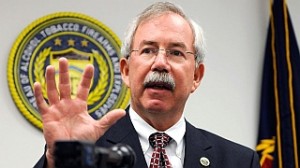 "The evidence we have gathered raises the disturbing possibility that the Justice Department not only allowed criminals to smuggle weapons but that taxpayer dollars from other agencies may have financed those engaging in such activities," said embattled acting ATF director Kenneth Melson.
"The evidence we have gathered raises the disturbing possibility that the Justice Department not only allowed criminals to smuggle weapons but that taxpayer dollars from other agencies may have financed those engaging in such activities," said embattled acting ATF director Kenneth Melson.
Embattled no more…
Embattled Ken Melton dropped a dime on the CIA.
In secret testimony late last week to a Congressional Committee investigating the 4-year old program, Melton, in addition to naming the DEA and the FBI as the Agencies behind the operation of which the ATF's "Operation Gunwalker" is but a small part, alluded to "shadowy other government agencies,"the very definistion of the CIA.
There's also this: Operation Gunwalker has no discernible law enforcement purpose which can be explained without snickering. So what was its purpose?
Cold dead citizen's hands just twitching for a fight
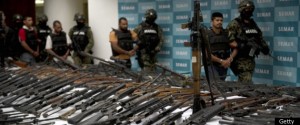 Right-wing "thinkers" lean heavily towards the purpose being a plot which somehow results in more firearm restrictions on U.S. citizens.
Right-wing "thinkers" lean heavily towards the purpose being a plot which somehow results in more firearm restrictions on U.S. citizens.
Unless you think there are people out there who drool while contemplating tearing rifles from the hands of cold dead citizens (or vice versa) the suggestion is ludicrous without people eager to destroy their careers in vain efforts to achieve it.
There are no such people. A much better guess at it's purpose is this:
The purpose of Operation Gunwalker is to do exactly what it has now been proven to have been successful in achieving: placing large quantities of high-quality lethal weaponry in the hands of Mexican drug lords.
This raises a question: If the CIA is arming Mexican drug cartels, might they not also have been behind the otherwise-puzzling effort to supply these same drug lords with top-quality American-registered airplanes and jets?
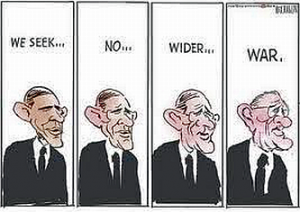 Were the two now-infamous American-registered planes busted in Mexico's Yucatan carrying almost ten tons of cocaine part of this same so-far unnamed Operation behind the ATF's Operation Gunwalker?
Were the two now-infamous American-registered planes busted in Mexico's Yucatan carrying almost ten tons of cocaine part of this same so-far unnamed Operation behind the ATF's Operation Gunwalker?
It's a revelation I was planning to save for my upcoming book. But it especially pertinent now. Without a shadow of a doubt I can report that the DC-9 from St. Petersburg whose mysterious flight to South America was cut short by its seizure in the Yucatan while making its way back was owned and controlled at all times pertinent to this discussion by the Central Intelligence Agency.
The DC-9 belonged to the CIA. And I have the documents to prove it.
A kicker from Wisconsin, not far from Wally Hilliard
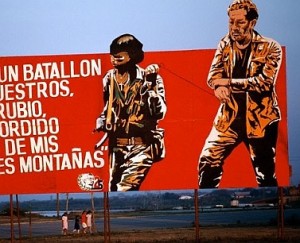 It is the emblematic drug story of our times…
It is the emblematic drug story of our times…
Nothing like it has been seen since the day Eugene Hasenfus broke the rules and brought a parachute with him when he went to work, one day in March of 1986, aboard a C-130 military cargo plane, dropping supplies to the Contras over Nicaragua.
Hasenfus was a ‘kicker.’ His technical specialty in flight was kicking cargo pallets out the open cargo door of the lumbering four-engined plane as it made low passes over the jungle.
A Sandinista soldier on the ground got off a lucky shot with a shoulder-fired missile. As the plane began to fall out of the sky Hasenfus grabbed his parachute and leaped out the open door.
Everyone else on the flight perished. Hasenfus was supposed to have done what they did. The reason became clear minutes later when he's captured by the Sandinistas. Shortly thereafter, Hasenfus tells his captors he is working for the CIA.
And boom! The Iran Contra Scandal began.
You are here. It is now.
 "We are here," said H. L. Mencken, famous American muckraking journalist, "and it is now. Further than that all human knowledge is moonshine.”
"We are here," said H. L. Mencken, famous American muckraking journalist, "and it is now. Further than that all human knowledge is moonshine.”
It is April 10 2006, late afternoon, almost sunset, in the jungle in the Yucatan, approaching the Airport in Ciudad del Carmen, in the State of Campeche, Mexico. The plane's journey began in St. Petersburg. It flew to Colombia and Venezuela. Now it is on the way back, carrying a load of 5.5 tons of cocaine.
Veteran drug pilot Carmelo Vasquez Guerra is bringing the American-registered (N900SA) DC-9 down gingerly onto the runway. His plane has a serious mechanical problem, which has already caused him to return to Maiquetia International Airport in Caracas twice, that apparently wasn't fixed after a serious incident the year before where it ran off a runway in Tallahassee.
The mechanical problem wasn't addressed at Maiquetia either. And it is a well-known fact among drug pilots that most busts occur after mechanical difficulties force changes in a pre-planned itinerary while in transit.
"Maiquetia is to narco-pilots what Memphis is to Federal Express: home port, place of business, and Mothership," a pilot in Fort Lauderdale told us. It is probably true. Drug pilots are often asked to fly dangerous routes in seriously sub-standard airplanes.
"The emblematic drug flight of our times."
 It is the second largest shipment of cocaine ever seized in Mexico.
It is the second largest shipment of cocaine ever seized in Mexico.
This record that will later be eclipsed many times. In April of 2006, the idea of railroad box-car-sized loads of cocaine flying through the skies overhead was still a novelty.
But what makes it an emblematic drug flight isn't the size of the load, but the fact that ripples from what happens here will change dozens of lives. Like the downing of Eugene Hasenfus' CIA plane, it will become a game-changing event in the U.S., in Mexico, Venezuela, Colombia, Guinea-Bissau on the west coast of Africa… and across the Sahara Desert.
Fast-forward through the bust, and we are face-to-face with what comes next:
Country by country, the list of those who, because of repercussions from this one flight, have been assassinated, or murdered, or implicated, or charged, or arrested and imprisoned—just so far.
It is an impressive list.
STILL HERE. STILL NOW.
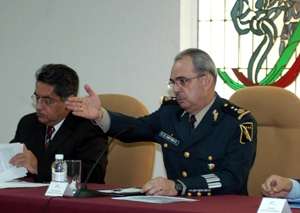 It is the day after the crash of the Gulfstream II, the afternoon of April 11, 2006.
It is the day after the crash of the Gulfstream II, the afternoon of April 11, 2006.
The Mexican government wheels out senior officials at a formal press conference celebrating the seizure. They field heavy-hitters: Defense Minister Ricardo Clemente Vega García, and Attorney General Luis Santiago Vasconcelo.
Inside the press center in Mexico City of the Government of Mexico’s Ministry of National Defense, Gen. Carlos Gaytan, head of the Mexican military in the Yucatan, tells reporters who should get the credit for the seizure of 5.5 tons of cocaine yesterday in Ciudad del Carmen.
"It was the product of military intelligence,” General Gayton is saying. “What gave it away was who paid to keep the airport open past normal business hours to allow the DC-9 to make an allegedly emergency landing.”
Jose Luis Santiago Vasconcelos, head of the Attorney-General of Mexico's drug command, begs to disagree. He wants to credit the Attorney General of the Republic (PGR) office.
"The PGR discovered that the two pilots, the crew of the Falcon business jet that flew in earlier, who wanted to pay for the extension of services to the DC-9, were arrested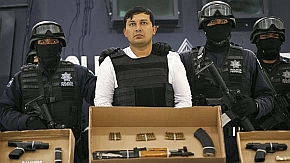 together in 1999 for flying an aircraft with drugs. They were released a year later under an injunction.”
together in 1999 for flying an aircraft with drugs. They were released a year later under an injunction.”
We are at The Press Conference Claiming Credit, one event in a five-stage Latin American ritual. The best part is usually The Perp Walk.
Almost always the Perps look suitably chastened. Often they look noticeably bruised as well. It is part of the ritual. They are harvesting the wages of sin.
Standing in front of hot white TV lights, expressing remorse… it is part of their penance.
There will be more. But in the end, it will be all right. Did you hear how much time the two pilots caught with 70 kilos did? They were out within a year.
It is the system.
“Don’t touch my bags if you please, Mr. Customs Man.”
But…listen! General Guyton is saying something odd…
“It was a legitimate flight with an airline in the U.S. legally established, an authorized flight," General Gaytan says. "But after many years it has returned to its old ways, transferring drugs from South America to Mexico."
The DC-9 airliner, the cause of the current unpleasantness, was painted like aircraft from the Department of Homeland Security. It looks for all the world like its been carrying potentates from the US Department of Homeland Security to a conference on drug interdiction at some posh hotel in Cancun.
But it wasn’t. Despite being a flight with no passengers, the plane nonetheless boasted 128 identical black leather suitcases in the hold, each one bursting with cocaine. And each suitcase had been stenciled on one side, with a slightly-surreal single word injunction:
“Privado.”
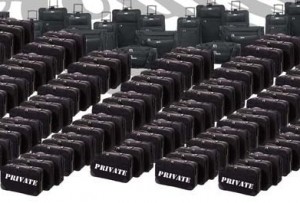 Gentlemen do not rummage through other gentlemen’s cocaine-filled luggage.
Gentlemen do not rummage through other gentlemen’s cocaine-filled luggage.
In the U.S., Anne Patterson, assistant secretary of state for narcotics and law enforcement, blames "the permissive and corrupt environment in Venezuela” under Chavez (natch!) for the big DC-9 bust.
She mentions nothing about what the environment in St. Petersburg Florida might be like. So far, in a few countries, here is some of what's happened.
In the United States.
The U.S. is easy. Let's do it first: Nobody did anything wrong. Nobody went to jail.
The Cartel of the Sun welcomes you to Venezuela
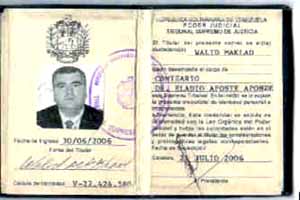 The Venezuelan military controls drug trafficking “hot spots” in the border region where cocaine crosses from Colombia, and at the international airport of Maiquetia, which was the last stop for the St. Petersburg DC-9 before it flew off to infamy in Mexico’s Yucatan carrying 5.5 tons of cocaine.
The Venezuelan military controls drug trafficking “hot spots” in the border region where cocaine crosses from Colombia, and at the international airport of Maiquetia, which was the last stop for the St. Petersburg DC-9 before it flew off to infamy in Mexico’s Yucatan carrying 5.5 tons of cocaine.
Walid Makled, drug trafficker, former Chavez crony, and, according to DEA Administrator Michele Leonhart—a “Kingpin of Kingpins” in the drug trade, has previously accused The "Cartel of the Suns", a corrupt clique in the Venezuelan Armed Forces, named for the gold stars Venezuelan generals wear on their epaulettes.
That was when he was incarcerated in Colombia. But he wasn't extradited to the U.S., as was expected, but to Venezuela. There may be little talk of the "Cartel of the Suns' from Makled now, by while he was talking he implicated serving or former members of the military, including Army Chief General Henry Rangel Silva, former Director of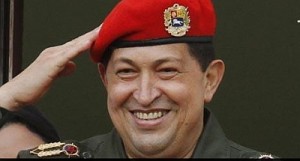 Military Intelligence Hugo Carvajal, National Guard General Dalal Burgos, and former captain Ramon Rodriguez Chacin, now the Minister of Interior and Justice.
Military Intelligence Hugo Carvajal, National Guard General Dalal Burgos, and former captain Ramon Rodriguez Chacin, now the Minister of Interior and Justice.
Makled also implicated more than a handful of members of the National Assembly, and Hugo Chavez’s political party, the PSUV, whose friendship Makled says he purchased through a gift of more than two million dollars in campaign cash.
Murder. Mayhem. Madness. Mexico
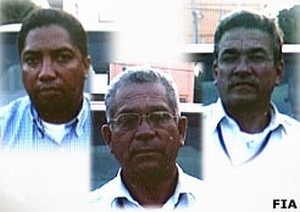 In Mexico, a dozen Federal agents in Ciudad del Carmen go to jail. Four airport policemen serve time. The company running the airport, ASUR, is considered too big and powerful to even bother investigating.
In Mexico, a dozen Federal agents in Ciudad del Carmen go to jail. Four airport policemen serve time. The company running the airport, ASUR, is considered too big and powerful to even bother investigating.
Two pilots—Fernando Poot Perez and Marco Perez de Gracia—who work for the Government of Mexico in Mexico City, for Conagua, the National Water Commission, are convicted of drug trafficking. They both go to prison, where Perez de Gracia hangs himself in his cell… with a sock.
Four other drug pilots are somehow apprehended, are convicted and sent to prison. Omar Alfredo Jacomé del Valle, Julio César Sánchez Martell, Bermúdez Felipe Flores Duran, and Cesar Antonio Estrada.
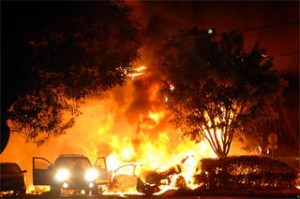 José Luis Santiago Vasconcelos, Mexico's top anti-drug prosecutor, the face of the anti-drug effort, and head of the Organized Crime Specialized Investigation Office (SIEDO) dies in a plane crash in November 2008.
José Luis Santiago Vasconcelos, Mexico's top anti-drug prosecutor, the face of the anti-drug effort, and head of the Organized Crime Specialized Investigation Office (SIEDO) dies in a plane crash in November 2008.
With him on the plane was the top aide to Mexico’s President Felipe Calderon, Juan Camilo Mouriño, who took over for Santiago Vasconcelos as the leader of the fight against the drug trade in Mexico when the former abruptly left his job as Mexico’s top drug cop. He's killed, too.
Altogether seven people are killed aboard the luxury Learjet 45 (XC-VMC) belonging to the Mexican Government that violently crashed to earth at the worst possible time and place: the crash took place in the heart of the financial district during rush hour. A fireball rose as high as the tops of the surrounding office buildings, torching a number of cars, and injuring 40 people.
Body parts were strewn everywhere about the wreckage.
Another one of 'just one' of those things
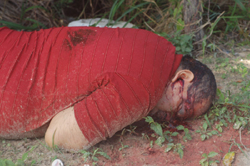 Jose Luis Soladana Ortiz, Director of Civil Aviation in the Yucatan, is assassinated on his way towork.
Jose Luis Soladana Ortiz, Director of Civil Aviation in the Yucatan, is assassinated on his way towork.
Soladana is in direct radio contact with the pilots on the day of the unfortunate incident. For reasons unknown, he denies the DC-9 permission to land at Cancun International. Reports suggest the men previously appeared to have had an agreeable and mutually-beneficial relationship. Piloted by Carmelo Vasquez-Guerra, the DC-9 had landed there before, many times, without incident.
The plane, a Gulfstream II (N987SA) business jet, makes an emergency crash-landing in the jungle near Tixkokob, a hamlet 50 miles from Merida. It's fuselage is torn wide open. As if to add insult to injury, when authorities finally show up, they are little help. In fact, they insist on seizing the plane, arresting everyone in the vicinity, and then unloading the load of cocaine in the wreckage.
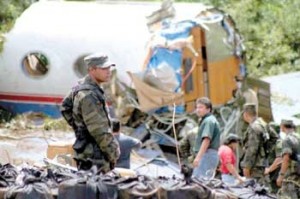 Soladana is adjudged responsible for the second American-registered plane from St. Petersburg to come to a bad end in the Yucatan in just eighteen months. His body is found on the side of the road, face down, holding his cell phone with both hands in front of his chest.
Soladana is adjudged responsible for the second American-registered plane from St. Petersburg to come to a bad end in the Yucatan in just eighteen months. His body is found on the side of the road, face down, holding his cell phone with both hands in front of his chest.
As authorities examine the body, the phone begins ringing, eerily, repeatedly. His killers are still nearby, mocking the investigators.
Cocaine dribbles from the Gulfstream’s broken fuselage. Soladana Ortiz paid for it with his life.
An airplane carrying 5.5 tons cocaine? A CIA plane? Ridiculous!
All that's left of the plane is its colorful history. An airplane with any kind of colorful history, let alone this one, might seem to be the wrong plane to have picked—at least publicity-wise—for a job where one possible outcome leaves you stuck south of the border, murmuring through broken teeth the words to "Lawyers Guns & Money, an old Warren Zevon song.
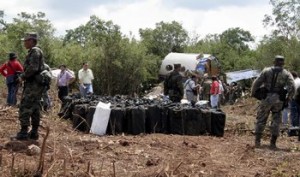 The DC-9's FAA registration records alone make it painfully clear it has been a CIA plane for a number of years, specifically in Colombia, and in extraordinary renditions.
The DC-9's FAA registration records alone make it painfully clear it has been a CIA plane for a number of years, specifically in Colombia, and in extraordinary renditions.
There is no reason to suspect the plane changed hands.
It has been flying tons of cocaine.
But this has nothing to do with any long-term previous relationship with the CIA the plane may have had, if any.
When six DEA agents fly down from Mexico City to get a look at the wreckage two days after the Tikkobob crash, Mexican soldiers turn them away from the site. There is nothing to say.
It's just one of those things.